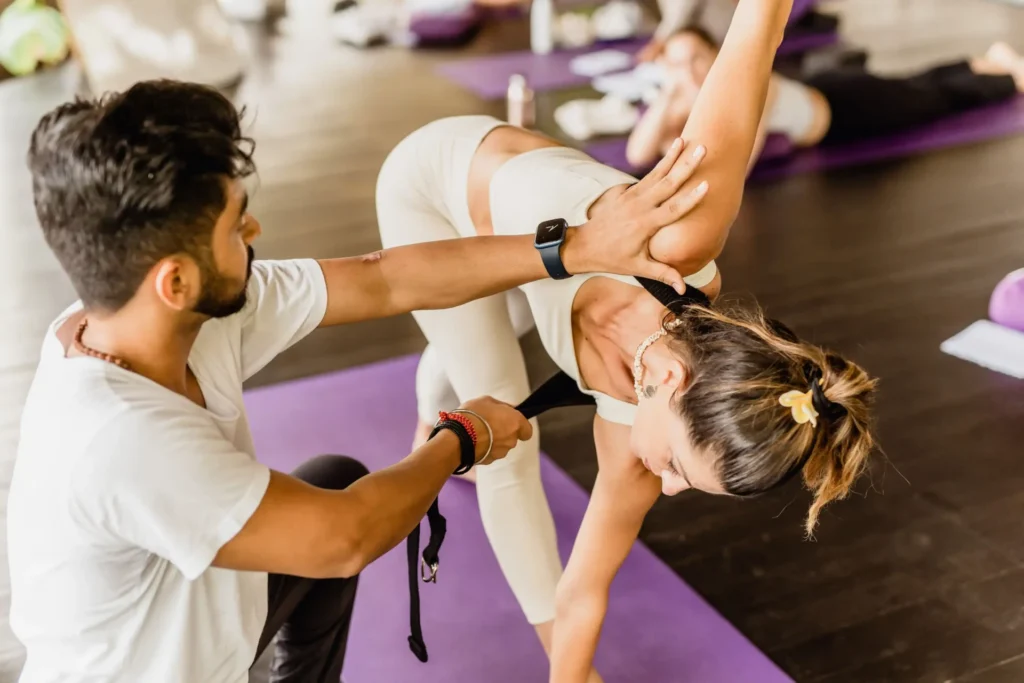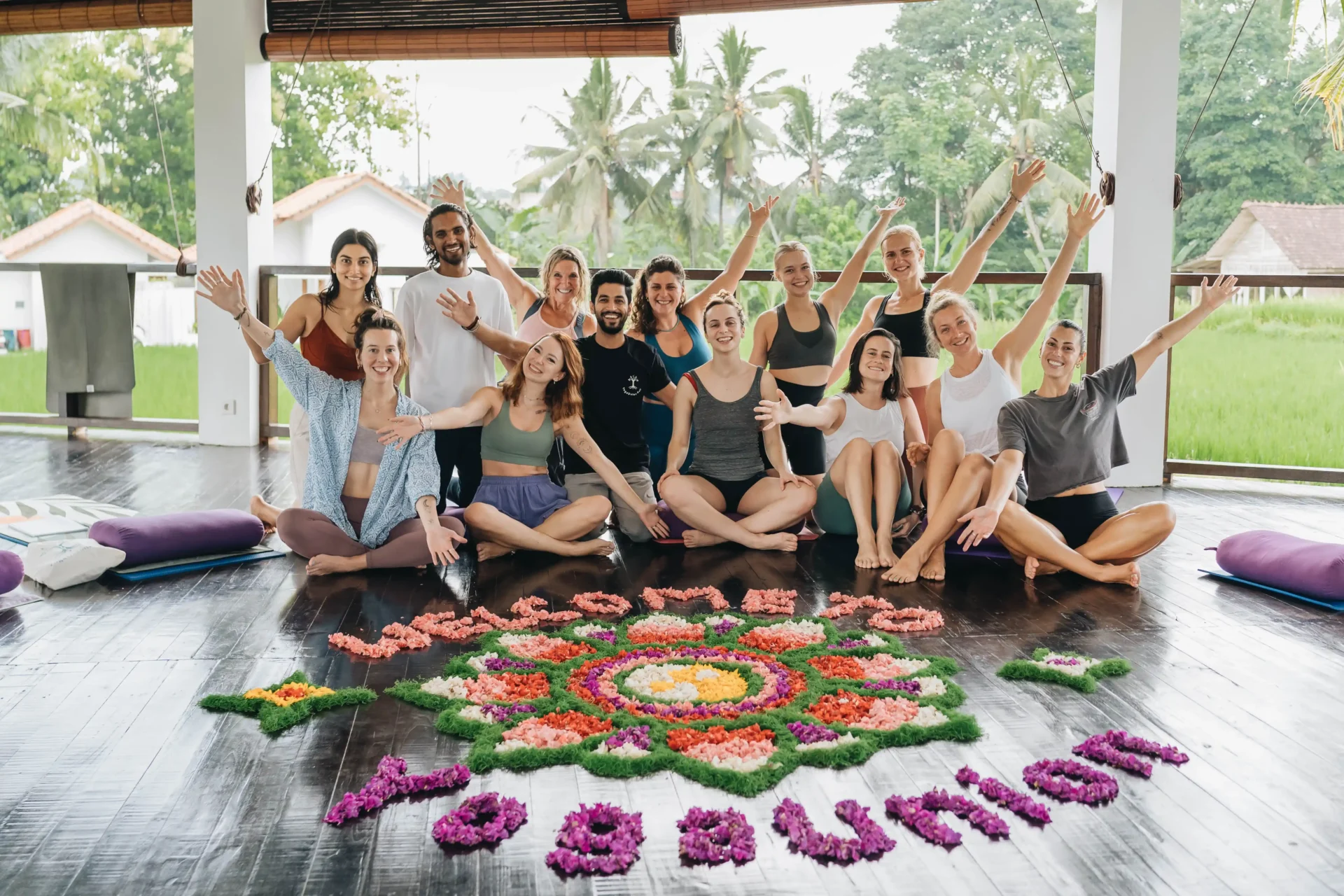Vinyasa Yoga is one of the most popular contemporary styles of yoga. Often referred to as “flow,” it is characterised by the smooth transition between poses. Unlike Hatha Yoga, which focuses on holding individual poses with pauses in between, is more dynamic and continuous in nature.
One of its key benefits is its positive impact on overall health. Vinyasa Yoga keeps the body active, reduces stress, supports heart health, and is accessible to a wide range of fitness levels.
In this article, we’ll take a closer look at what Vinyasa Yoga truly is, going beyond the flowing movements to explore the deeper essence behind the practice.
What Is Vinyasa Yoga?
Vinyasa Yoga is a style of yoga that synchronises movement with breath. The word vinyasa comes from the Sanskrit “nyasa” (to place) and “vi” (in a special way), which together suggest placing movements with intention and awareness. Unlike static styles of yoga where you hold each pose for several breaths, Vinyasa emphasises transitions. Each posture flows smoothly into the next, led by the inhale and exhale.
Rather than following a fixed sequence, as seen in styles like Ashtanga Yoga, Vinyasa Yoga is flexible. It allows teachers to create creative, varied flows depending on the theme, intention, or energy of the day. But regardless of the structure, the breath remains the central guide.
More Than Just Poses
While Vinyasa Yoga includes familiar physical postures (asana), it is not just a series of movements. It is a practice of connecting the internal with the external by tuning into your breath, your body, and your state of mind. Every transition, every stillness, and every breath holds equal importance.
In many ways, Vinyasa is a metaphor for life. Things change, challenges arise, and we keep moving. This constant flow teaches us to stay grounded in the midst of change, to adapt with grace, and to listen more closely, both to ourselves and to the world around us.
Benefits of Vinyasa Yoga
The benefits of Vinyasa Yoga go beyond physical fitness. Its flowing sequences engage multiple muscle groups, helping to build strength, flexibility, and endurance over time. The movement feels natural and dynamic, offering both challenge and release. More than just exercise, Vinyasa becomes a moving meditation. As breath and movement align, the mind settles, bringing greater clarity and calm.
A core element of the practice is breath awareness, or pranayama. Each inhale and exhale guides the flow, anchoring your attention in the present. This mindful breathing supports nervous system balance, improves circulation, and nurtures a deeper sense of presence both during and beyond practice.
Vinyasa also strengthens your connection to the body. Each intentional movement helps you listen more closely to physical cues, which can improve posture, reduce injury, and build physical awareness. On an emotional level, the practice offers a gentle way to release tension and clear space within. Many find that regular practice brings not only physical ease but also emotional clarity and renewed perspective.
Is Vinyasa Yoga Right for You?
Is well-suited for:
- People who enjoy movement and fluid transitions
- Those looking for a blend of strength, flexibility, and mindfulness
- Beginners who are comfortable learning through flow (some basic understanding of poses is helpful)
- Experienced yogis who enjoy creative sequencing and breathwork
If you’re brand new to yoga, you might consider starting with a beginner-focused class or a slower-paced option like Hatha Yoga to build a foundation before diving into more dynamic flows.
How to Start Your Practice?
1. Find a Qualified Instructor
A knowledgeable teacher can guide you safely through sequences, offer modifications, and help you build confidence in your practice. Look for instructors with experience and training in Vinyasa Yoga.
2. Start Slow and Steady
There’s no need to rush. Focus on building awareness of your breath and basic transitions. With consistency, strength and familiarity will follow.
3. Practise at Home
If getting to a studio isn’t possible, there are plenty of online classes tailored to different levels. Create a quiet space, roll out your mat, and start with short flows to get used to the rhythm of the practice.
4. Listen to Your Body
The goal of Vinyasa Yoga is not perfection, but presence. Respect your limits, take rest when needed, and let your breath be your guide.

Embracing the Flow of Vinyasa Yoga
Vinyasa Yoga is an excellent way to unwind, improve your health, and stay active. It’s also worth noting that this yoga’s strength is in its diversity. If you appreciate having things a little unpredictable and loose, it’s definitely worth it to try vinyasa yoga.
Ready to go deeper? Join YogaUnion’s 200-Hour Vinyasa Yoga Teacher Training, a hybrid programme combining 100 hours online and 100 hours in-person in the beautiful coastal village of Mytikas, Greece.
Open to all levels, this training includes:
- A blend of Ashtanga and Vinyasa practices
- RYT 200 Yoga Alliance certification
- 10 days of accommodation and daily vegetarian or vegan meals
Explore your potential through guided practice, in-depth learning, and meaningful connection, with yourself and others. Your journey begins here.

